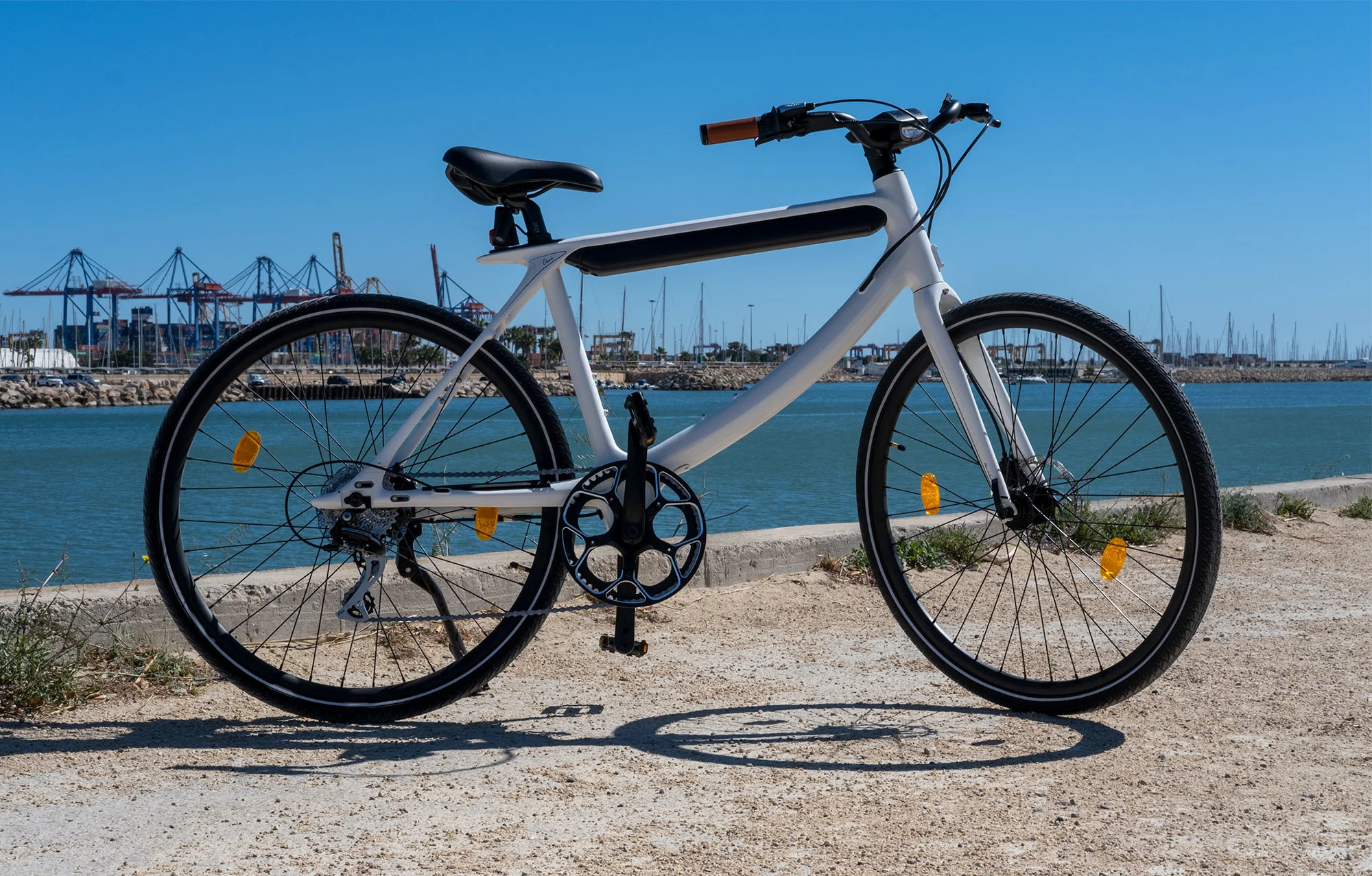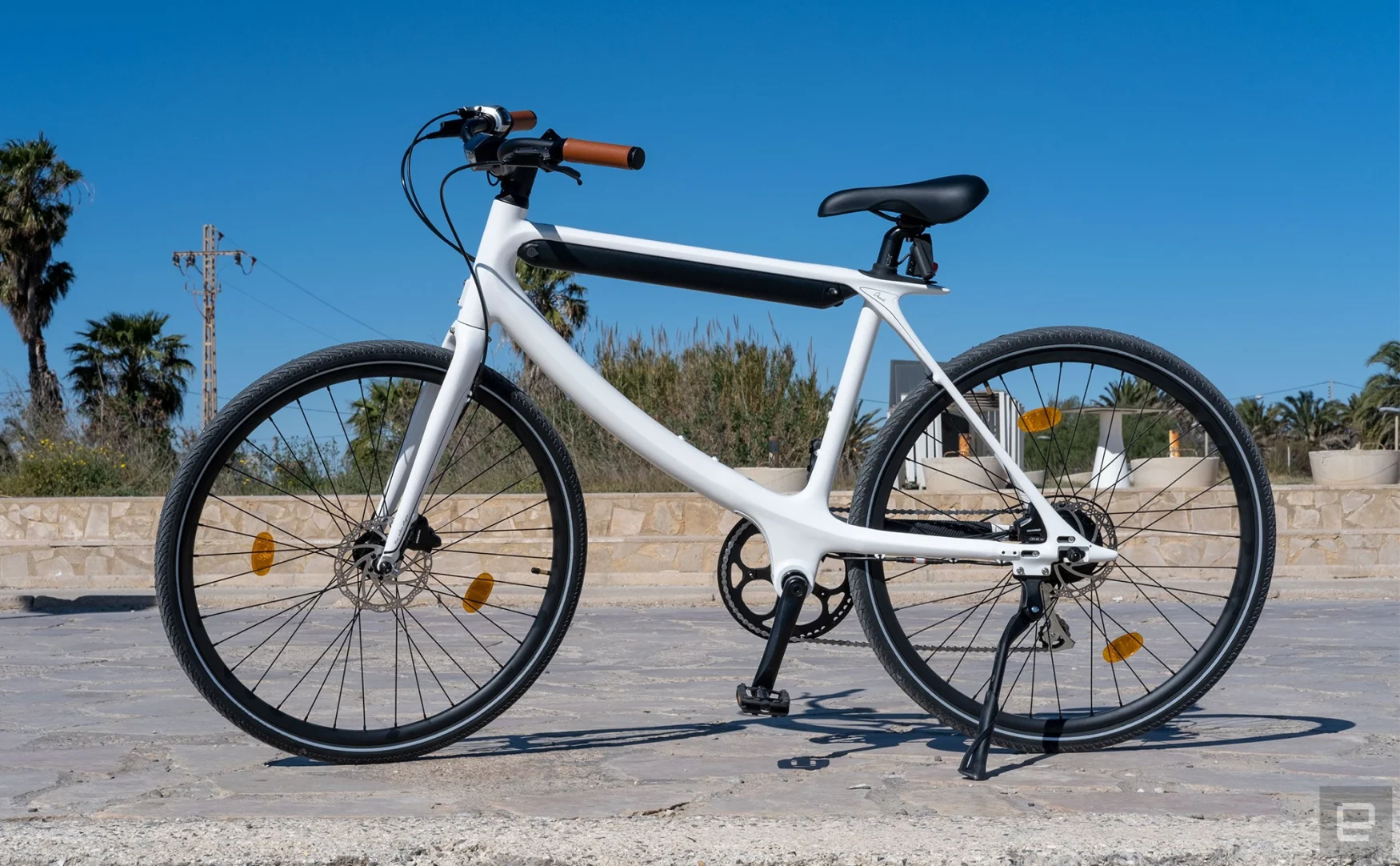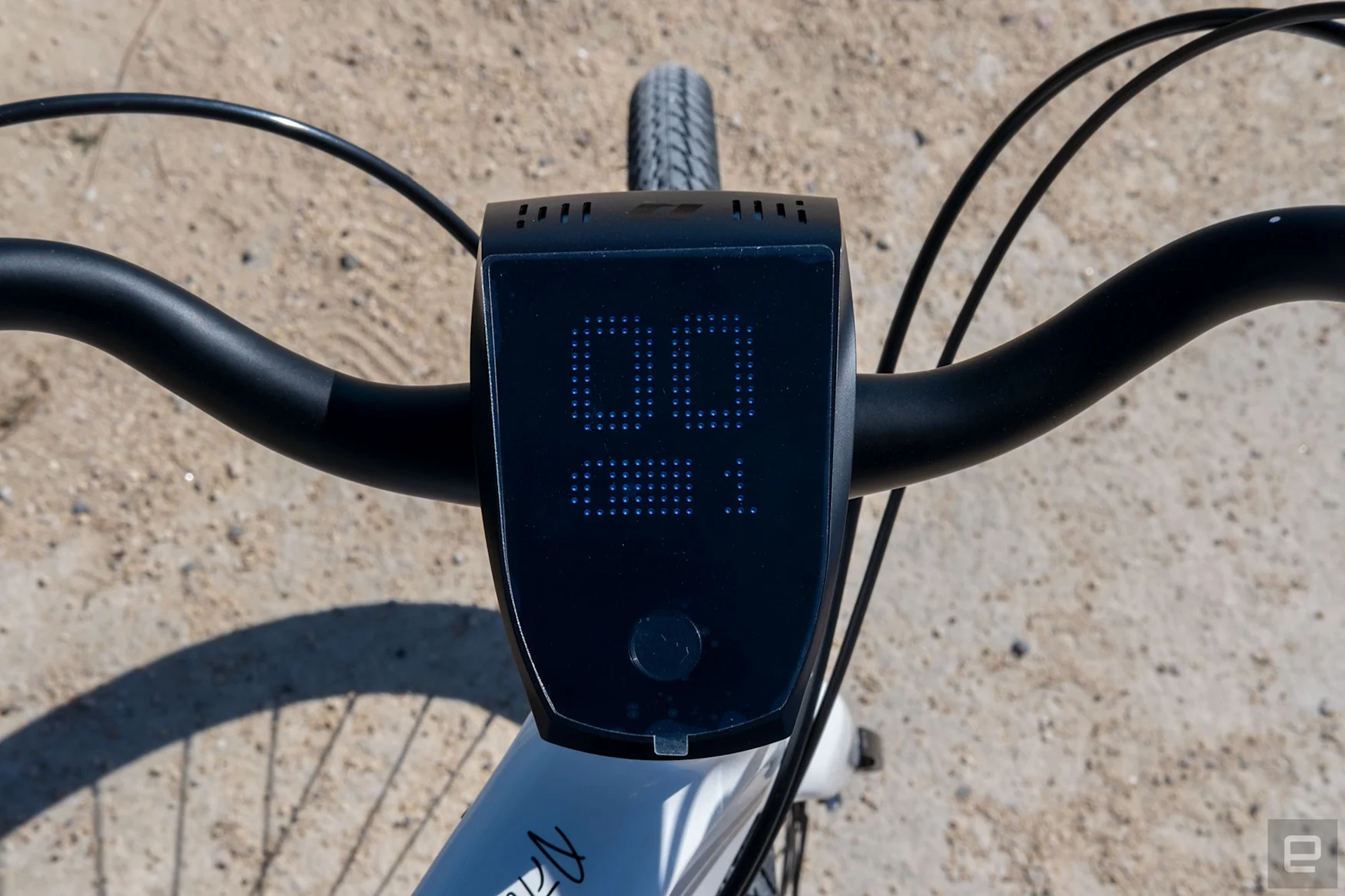
Urtopia may be a relatively new name in the e-bike world, but it makes a strong first impression. With its 4G, GPS, mmWave sensors and even light projection turn indicators, the Carbon 1 felt like the Inspector Gadget of two-wheeled travel, but its exotic design and road-bike leanings meant it wasn’t for everyone. The company’s second bike, the Chord ($1,799), has a much less divisive aesthetic and – unlike its sibling – practicalities like gears and a more upright (and city-friendly) ride. Importantly, the Chord contains all the wireless connectivity of the Carbon 1 at a cheaper price, possibly making it a more compelling package overall.
The Chord feels like Urtopia’s attempt at a stylish city bike in the vague style of Cowboy or VanMoof. The Chord is apparently inspired by pianos, with its black and white colorway and the melodic notes that play when you cycle through the power modes. At 46 pounds (21 kilograms), it’s noticeably heavier than the Carbon 1 (33 pounds/15 kg), but it’s on par with other models in the same category.
The motor is a pretty straightforward 350W hub powered by a removable 360Wh battery. Top assisted speed is 20MPH over four modes: Eco, Comfort, Sport and Turbo. The maximum range is an estimated 75 miles, but that will obviously depend on how much assistance you use. As a Class 1 ebike, there’s no throttle mode here; instead, there’s a Turbo mode with barely any need to pedal to get you up to that maximum speed. As mentioned, the Chord comes with an 8-speed Shimano gear system which, combined with the assistance modes, make for a flexible ride in terms of speed and effort.

Taking the Chord out for the first time, it was hard to ignore the extra weight compared to the aforementioned Carbon 1, but also the similarly pitched Tenways. It’s not chonky in the same way something like the 63-pound (28-kilogram) Velotric Discover 1 is but those extra pounds were noticeable the first time I tried hustling it (upright) into the elevator in my apartment block. Thankfully, it’s not something you’ll notice so much while pedaling.
The riding position is naturally more upright and it makes for a comfortable cruise around town. It’s not designed for off-road, but if you find yourself on uneven pavement or even a short stint on a dirt trail it does a decent job considering. The motor uses a torque sensor to decide when to kick in; it’s a very common system right now and does a good job of delivering power just as you need it.
Now, about that power. In the scheme of things, a 350W motor is a pretty standard entry-level option; it’s not about to pull your wrists out of their sockets when it kicks in, but it’s gets you to that 20MPH max speed in good time, as long as you’re willing to do the your part on the pedals. The three power modes are spaced adequately for whether you just want a little help or just wanna surprise that weekend warrior as you pass them barely pedaling. Turbo mode will reach max power without you really trying too hard – it’s a good option for if you’re feeling really pooped, and it doesn’t feel like the bike is pulling away from you, which can sometimes be the case with similar modes on higher-powered bikes.

For starters, the bell is still digital (you can even change the sound), but it’s triggered by a much clickier button that’s much more responsive. More importantly, the app feels more refined now and I haven’t seen any rides go missing during my time with it. In fact, they appear almost instantly once I finish.
Of course, automatically mapping rides is cool, but it’s not the primary purpose of the 4G/GPS. That would be the ability to track your bike if someone steals it. As long as the Chord’s within cell coverage, you’ll be able to see its last known location via the app. You can also set it so you receive notification the moment the bike moves – potentially giving you a heads up before a thief can ride off with it. Of course, if the battery runs out or the GPS can’t see the sky it won’t update the app, but the cell lasts for a good amount of time in standby and it only fully turns off if you remove the battery, which requires a key (or bike-breaking brute force).

0 Comments